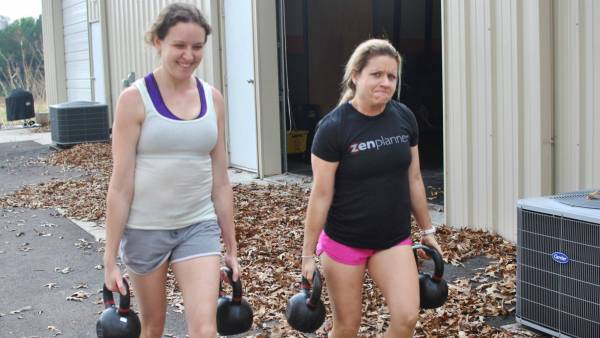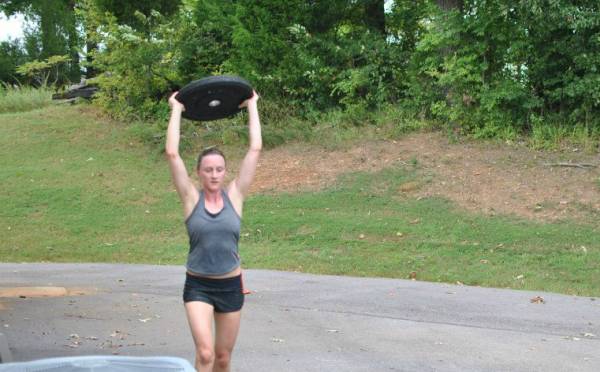Have you ever been to a physical therapist and been told you have something going on with your shoulder?Maybe the therapist calls it impingement, maybe tendinosis, or maybe he or she says it’s postural. Regardless, you’re told something is going on with your rotator cuff muscles and that you need to strengthen them.
The therapist then proceeds to show you some exercises with an elastic bandand tells you to do 3 sets of 8 or 10 reps for each.You know, to increase the strength of those muscles.
Have you ever been to a physical therapist and been told you have something going on with your shoulder?Maybe the therapist calls it impingement, maybe tendinosis, or maybe he or she says it’s postural. Regardless, you’re told something is going on with your rotator cuff muscles and that you need to strengthen them.
The therapist then proceeds to show you some exercises with an elastic bandand tells you to do 3 sets of 8 or 10 reps for each.You know, to increase the strength of those muscles.
Sounds logical, right?
Hate to say it, but that’s probably not going to help.
Here’s the thing: stabilizers aren’t strong in the first place, nor are they meant to be. And unless you’re rehabilitating from a surgery, then training them in strength sets and reps is actually a waste of time. I know you’re likely disagreeing with me, so read on and I will explain the function of our stabilizing muscles and how to properly train them so you can see the light.
The Role of Our Stabilizing Muscles
If there is one thing to take away from reading this article it is that our postural stabilizer muscles work at the reflex level. They are anticipatory muscles, which means these muscles should be on and working before any movement actually occurs. In fact, they should be on before we even think about movement. This is different from our prime movers – those we have to think about.
“The problem is that people tend to associate stability with strength, when in fact strength work is absolutely not stability.”
This reflexive nature is true of all postural stabilizers, but to keep it simple, I am going to focus on the aforementioned rotator cuff muscles to give you a clearer more easy to understand example. The rotator cuff muscles need to beat the contractions of the lat, pec, and deltoid so they can suck the ball of your shoulder into the socket to stabilize it in order to allow the bigger prime movers to move the arm about its axis. They don’t need strength to do this; they need stability and motor control.
The Problem With the Word “Stability”
It seems that stability is a new buzzword, always being used but never fully understood. The problem is that people tend to associate stability with strength, when in fact strength work is absolutely not stability.
Simply activating and strengthening postural muscles does not mean they will start to work at the reflexive level. This means you can have an incredibly strong rotator cuff, but if it is slow to work, then you will still have pain and dysfunction. It also means you are wasting energy training strength when what you really need to be training is stability.

Loaded carries force the the rotator cuff muscles to fire reflexively.
Replace the Word “Stability” With “Motor Control”
I recently attended a fantastic lecture by Gray Cook, a leading physical therapist in the field of health and fitness. He asked us to stop using the word stability and start using the term “motor control,” for all of the reasons I just mentioned. This term is healthier to use as people stop thinking of the exercises involved as static isometric or strength training, and instead think of them as working on movement and function.
The other reason this switch of vernacular is so important is that it better encompasses that stability and motor control are constantly changing – every time you change positions, in fact. You can have fantastic stability, or motor control, in one position, but have it go to hell in a handbasket in another. This is why we need to focus on motor control and movement. We need to know which pattern is dysfunctional. That pattern is the weakest link, and that is the breakdown in the system.
Why Does Motor Control Need Retraining?
The most common causes of compensation and poor processing (in other words, things that negatively affect motor control) include:
- Sedentary or deconditioned state (if you don’t use it, you lose it)
- Previous injury, instability, or structural deformity
- Predisposition to hypermobility (the joints don’t communicate as tightly with the muscles)
These things lead to poor movement and poor motor programming. This is why we need to intervene and train proper motor control to stay injury resilient and to rehab from any current injuries.
How Do You Train Stabilizers?
Remember the one thing I asked you to remember from this article earlier? That stabilizing muscles are reflex driven and do not or should not require conscious thought.
“You can have fantastic stability, or motor control, in one position, but have it go to hell in a handbasket in another. This is why we need to focus on motor control and movement.”
Therefore, the best way to train these muscles is to do so in a way that drives our reflexes to kick in. Looking again at the rotator cuff, the best way to do this is through traction or compression.
- Traction – This is where things like loaded carries come in. A suitcase or farmers carry forces the rotator cuff muscles to fire by reflex simply by holding something heavy.
- Compression – The same thing happens to the joint during compression that happens during an overhead carry or Turkish get up.

Overhead carries are another way to train stabilizers.
The other way you need to train stabilizers is simply to train proper movement. As I mentioned before, stability changes based on the position someone is in, so you need to determine what your dysfunctional movement pattern is and train this pattern. This requires a screen or an assessment from a movement specialist who can then help you determine which movements you need to work on and how to do so.
Moral of the Story
So, now that you’ve read this article, I hope you realize why strength training your stabilizing muscles is a waste of time and energy (except post surgery). These muscles aren’t strong to begin with. They are anticipatory and reflex driven and need to be trained as such. Proper movement and motor programming is key and will make the difference that allows you to be an injury-resilient performance machine.
References:
1. Gray Cook and Greg Rose. Three Principles You Can Apply to Any Movement..
2. Gray Cook. Balance, Posture, and Movement..
Photos 2 and 3 courtesy of CrossFit Impulse.






